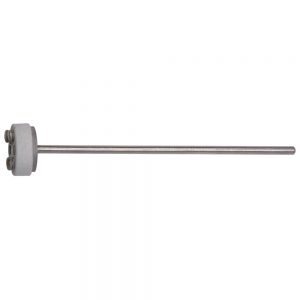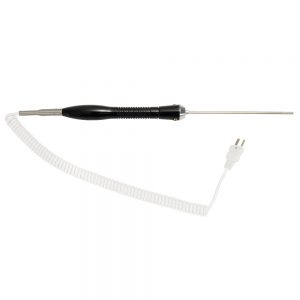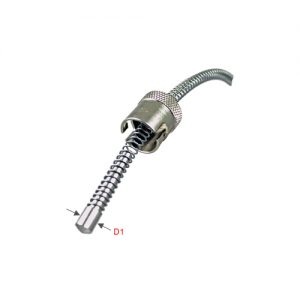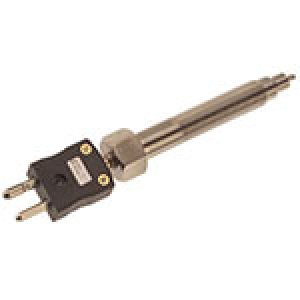PTSHEAT sales engineers can design exact fit PT100 RTD’s to replace your original equipment and for new applications. We guarantee our parts! We will supply proper form, fit, function sensors every time. Please allow us the opportunity to work with you on your RTD’s needs!
 |
 |
|
Tube and Wire Assemblies |
Style AC / R2 Plug or Jack Termination
|
 |
 |
|
Wafer Head Assembly |
Sensors with Fittings for heads and through wall |
 |
 |
|
Hand Held Probe for process testing / measurement |
Connection Head |
RTD’sResistance Temperature Detectors (RTD’s) are temperature sensing devices consisting of a wire coil or deposited film of pure metal, usually platinum. The element’s resistance increases with temperature in a known and repeatable manner. RTD’s exhibit excellent accuracy over a wide temperature range, –200 to 650°C (–328 to 1202°F).
|
———— RTD’s offer ————
Standardization: RTD’s are manufactured to industry standard curves, usually 100 ohm platinum to IEC 751, which makes them very interchangeable. |
———— RTD’s offer ————
Linearity: The platinum RTD produces a more linear curve than thermocouples or thermistors. The RTD’s non-linearities can be corrected through proper design of resistive bridge networks. |
| Specifications and Compliances? | What is Temperature Coefficient of Resistance (TCR)? | Interchangeability and Repeatability |
| All of Phoenix Thermal Supply’s RTD’s comply with the following specifications:
IEC publication 751 issued by the International Electrotechnical Commission (dated 1983). DIN 43760 issued by Deutsches Institute fur Normung (Germany), dated 1987. The platinum resistance curves are now covered under DIN IEC 751. |
Temperature coefficient differentiates between resistance/temperature curves of RTD’s. It is also called ALPHA and may be specified in various ways by different manufacturers. Here TCR is the RTD’s resistance change from 0 to 100°C, divided by the resistance at 0°C, divided by 100°C:
Example: A platinum RTD measuring 100 Ω’s at 0°C and 138.5 Ω’s at 100°C has TCR 0.00385 Ω/Ω/°C Stated another way, TCR is the average resistance increase per degree of a hypothetical RTD measuring 1 ohm at 0°C. |
Interchangeability and accuracy are commonly cited as the RTD’s most distinguishing attributes. Because of the tight tolerances of the Class A and Class B, RTD’s are quite interchangeable. Their accuracy is also very good because of the RTD’s repeatability over the standard temperature scale from –260°C to 630°C. Ordinary industrial RTD’s tend to show a drift of less than 0.1°C per year in normal use. Because RTD’s are exactly what the name implies (Resistance Temperature Detector), a resistance type sensor, any resistance introduced by the addition of extension wires between the RTD and the control or measuring instrument will add to the readings. This added resistance is not constant since the extension wires, usually copper, change their resistance values with changing ambient temperature. Extension wire errors can be significant, particularly with small gauge wires or elements with low sensitivity. Fortunately most of these errors may be nearly canceled by using a three wire system. The majority of RTD’s in today’s industry are 3- or 4-wire systems; the 2-wire lead system is the least efficient unless the leads are heavy gauge, very short, or both. In 3- or 4-wire circuits, common leads, connected to the same end of the RTD element, are the same color. |
Applications:
- Food Processing Equipment
- De-Icing
- Platens
- Molds and Dies
- Plastic Injection Molding Equipment
- Extrusion Equipment
- Ovens
- Industrial Heat Treating
- Liquid Temperature Control
- Medical Equipment
- Process Temperature Measurement
Temperature Sensors
This Post Has One Comment
Comments are closed.


Contact one of our sales engineers to discuss your RTD Sensor application. We know how to spec in RTD sensors and will do nothing short of our best efforts of becoming your preferred source. Thank you for your business!